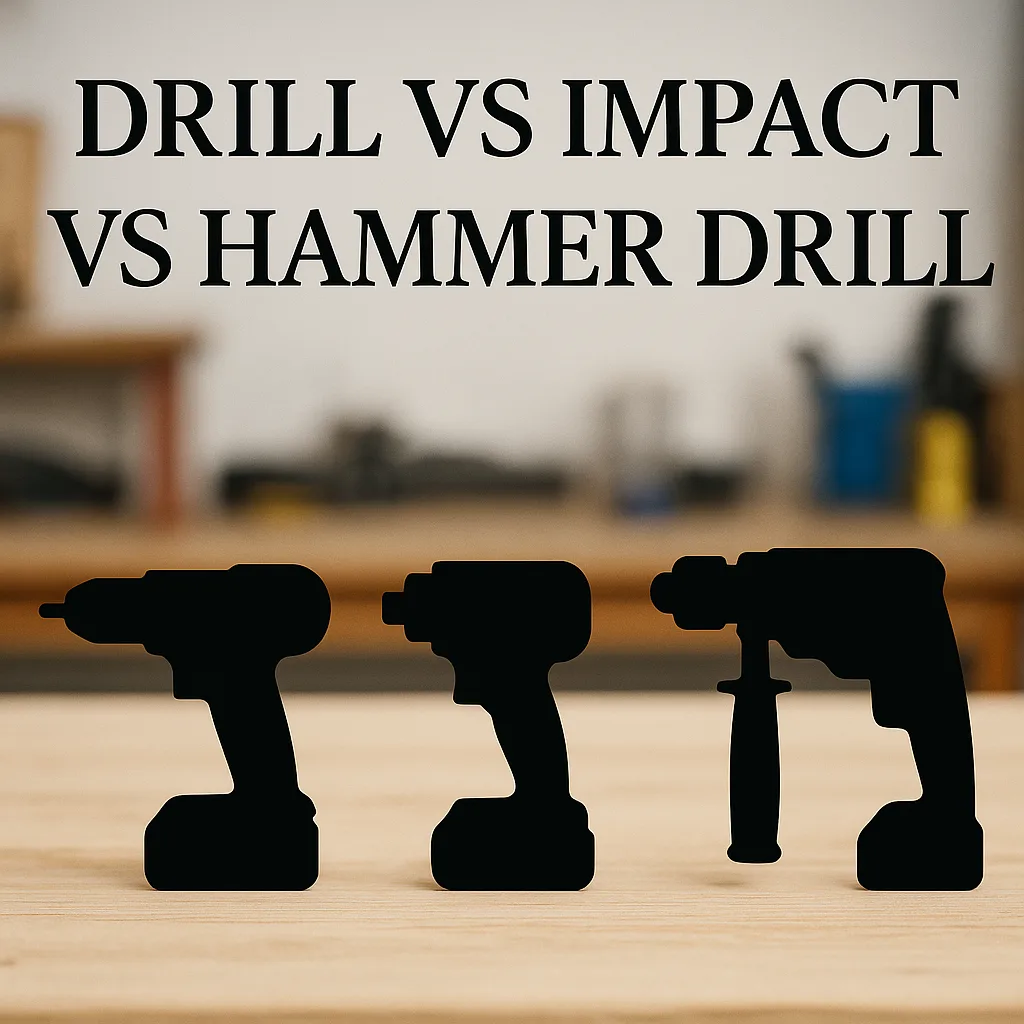New! DIY Project Planner. Plan smarter, skip the spreadsheets. Start Your Free Trial Today →

You’ve got a project in front of you, and your starter drill feels… underpowered. Or maybe it’s just the wrong tool altogether. Welcome to the world of drill vs driver vs hammer—and how to figure out which one you actually need.
This guide breaks down what each tool does, when to use them, and what kind of combo kit (if any) makes the most sense for your setup.
This is what most people start with. A standard cordless drill spins bits and screws and handles about 70% of basic DIY tasks.
Best For:
We’ve used the Makita 18V Compact Drill/Driver for years—it’s light, reliable, and has enough torque for basic builds and repairs.
Limitations:
Impact drivers use concussive force to drive screws without stripping them. You’ll feel the pulsing torque—it’s like a drill on caffeine.
Best For:
We trust the Milwaukee M18 Fuel Impact Driver. It drives screws fast and smooth without skipping or burning out bits.
Limitations:
Hammer drills combine spinning with a forward-pounding motion that pulverizes masonry and drives the bit deeper with less effort.
Best For:
We use the DEWALT 20V MAX Hammer Drill when working with CMU walls or mounting into poured concrete.
Limitations:
| Project | Tool to Use |
|---|---|
| Hanging curtains or shelves | Standard drill |
| Building a deck | Impact driver |
| Mounting into brick | Hammer drill |
| Framing interior walls | Drill + impact combo |
| Drywall install | Impact driver or drill (low torque setting) |
| Drilling holes in wood | Standard drill |
Upgrading your gear? You’ll want to see our roundup of top tool sets for homeowners that actually hold up.
Short answer: yes—if you plan to do more than one type of job.
The DEWALT 20V MAX Drill/Impact Combo Kit or the Makita 18V LXT Drill + Driver Kit are perfect for serious weekend warriors. You’ll always have the right tool at the ready—and batteries that work across both.
Look for:
If we had to recommend one tool for most homeowners: get a drill/driver combo kit. It covers the most ground, lasts the longest, and gives you room to grow without breaking the bank.
Looking for a do-it-all tool that actually works? Here’s our top pick for the best multi-tool for homeowners that’s built to last.